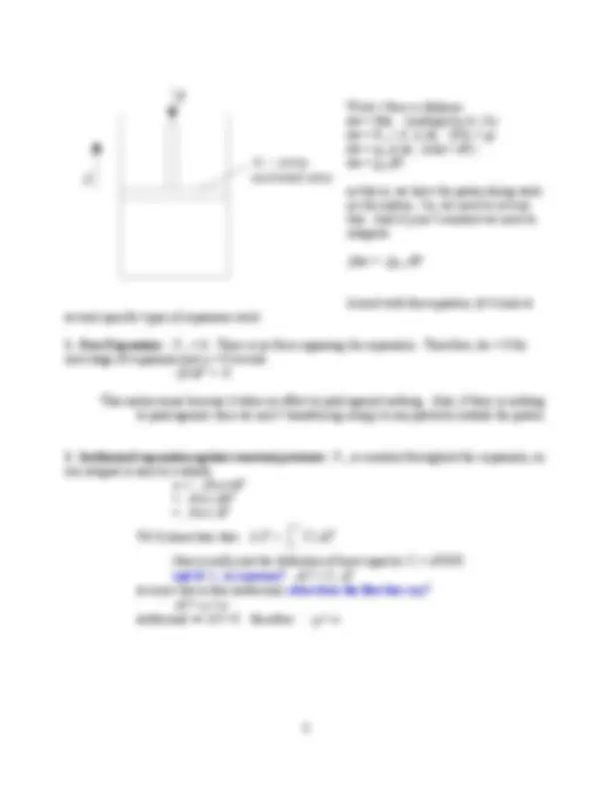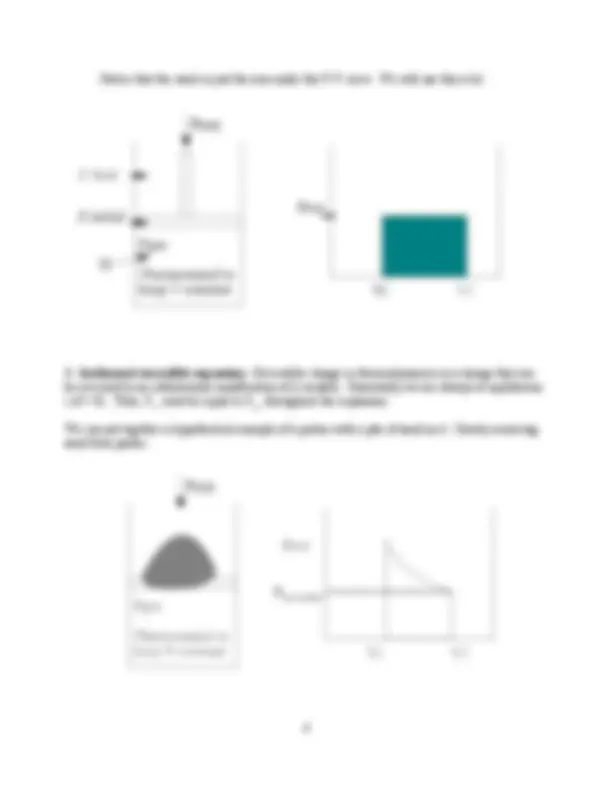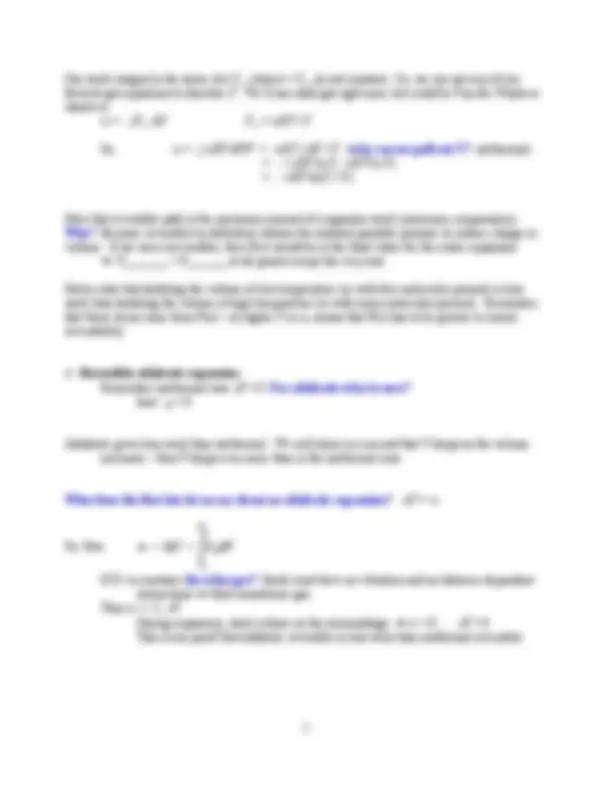





Study with the several resources on Docsity

Earn points by helping other students or get them with a premium plan


Prepare for your exams
Study with the several resources on Docsity

Earn points to download
Earn points by helping other students or get them with a premium plan
Community
Ask the community for help and clear up your study doubts
Discover the best universities in your country according to Docsity users
Free resources
Download our free guides on studying techniques, anxiety management strategies, and thesis advice from Docsity tutors
A lecture outline on the topic of expansion work and the first law of thermodynamics. It covers various types of expansion work, including free expansion, isothermal expansion, isothermal reversible expansion, and reversible adiabatic expansion. The concepts of work, energy, and pressure, and provides equations for calculating expansion work.
Typology: Study notes
1 / 6

This page cannot be seen from the preview
Don't miss anything!




Lecture 9 – Chapt 7 (second half) PV work.
Outline: System and Surroundings First Law ∆U = q + w Expansion Work
Quick review:
We will quickly get through to our fundamental thermodynamic equations for S and U.
Begin with definitions S = S (U ,V,N ) U = U ( S,V,N )
We can then easily define dS and dU.
dS
dU
dV
dN V N U N i (^) U V N
i i (^) j i
≠
dU
dS
dV
dN V N S N i (^) S V N
i i (^) j i
≠
and we define the coefficients as familiar driving forces
dS T
dU
p T
dV T
idNi i
dU TdS pdV (^) i dNi i
Remember with thermodynamics, we are keeping track of energy as it flows around. While ago I put up these sketches of heat and work from a microscopic perspective. Remember?
We can think of energy as the capacity to do work. Heat is energy that is transferred by a temperature gradient.
Today we will get into several descriptions of energy flow using the first law.
One final point about work and energy before we get rolling is how we define what is positive. The system is our set of particles of interest. In the above example it is the gas inside the piston. The surroundings is everything else. Positive work, then, is work done on the system by the surroundings. This is positive because work in this direction increases the energy of the system.
OK then, so let’s recall the First law of Thermodynamics: The internal energy of an isolated system is constant.
In other words: energy is neither produced or consumed. In yet another way, q and w are the only ways to change energy.
As pointed out by Abby last week, note that q and w are what kinds of functions? path fnctns But their sum is a? state fnctn.
One common kind of work: Expansion work: work arising from a change in volume. This takes place in internal combustion engines. So, why not picture this as a gas expanding against a piston.
Notice that the work is just the area under the P-V curve. We will use this a lot.
3. Isothermal reversible expansion: Reversible change in thermodynamics is a change that can be reversed by an infinitesimal modification of a variable. Essentially we are always at equilibrium
We can put together a hypothetical example of a piston with a pile of sand on it. Slowly removing sand from piston:
Our work integral is the same, but Pext (which = Pgas )is not constant. So, we can use any of our favorite gas equations to describe P. We’ll use ideal gas right now, but could be Van der Waals or whatever. w = - I Pext d V Pext = nRT / V
So, w = -I nRT d V/V = - nRT I d V / V ( why can we pull out T? isothermal) = - ( nRT ln Vf - nRT ln Vi ) = - nRT ln( Vf / Vi )
Note that reversible path is the maximum amount of expansion work (minimum compression). Why? Because reversible by definition utilizes the smallest possible pressure to induce change in volume. If we were irreversible, then Pext would be at the final value for the entire expansion ö Pext-irreversible < Pext-reversible at all points except the very end.
Notice also that doubling the volume at low temperature (or with few molecules present) is less work than doubling the volume at high temperature (or with many molecules present). Remember that these items came from Pext – so higher T or n, means that Pext has to be greater to ensure reversibility.
heat: q = 0
Adiabatic gives less work than isothermal. We will show in a second that T drops as the volume increases – thus P drops even more than in the isothermal case.
So, then
If Cv is constant ( for what gas? Ideal) must have no vibration and no distance-dependent interactions ö Ideal monatomic gas.
This is our proof that adiabatic reversible is less work than isothermal reversible